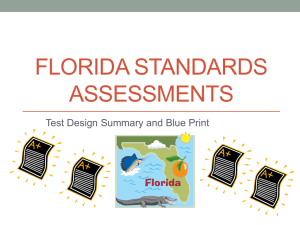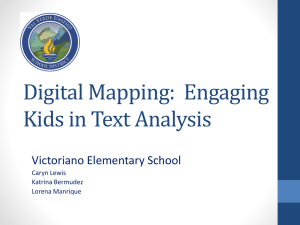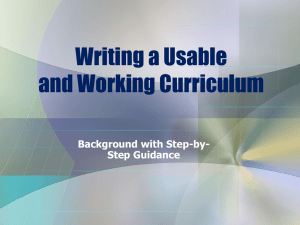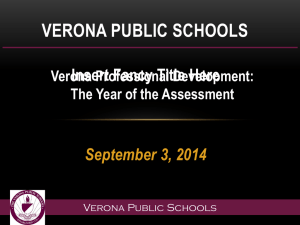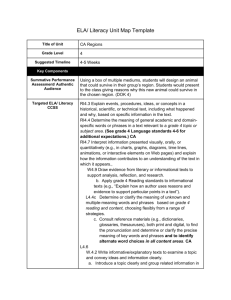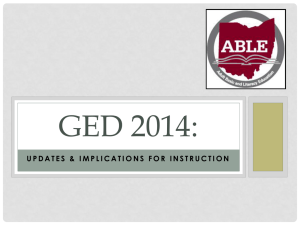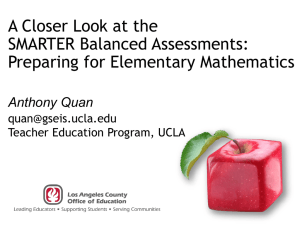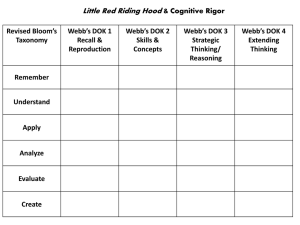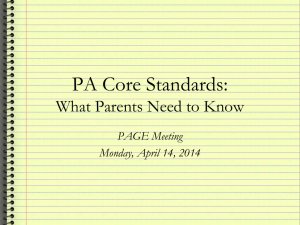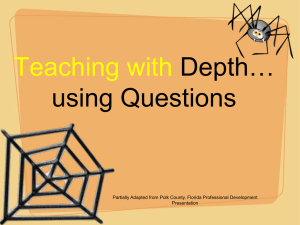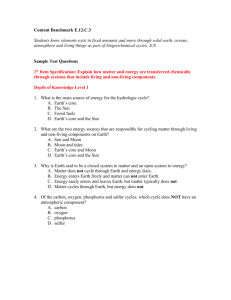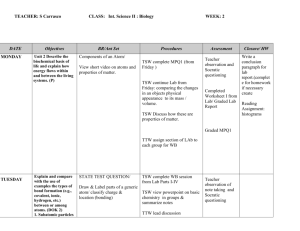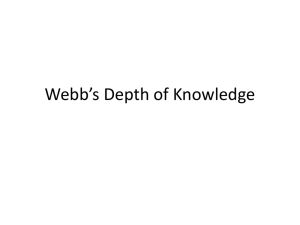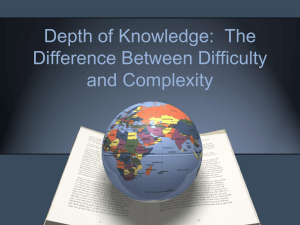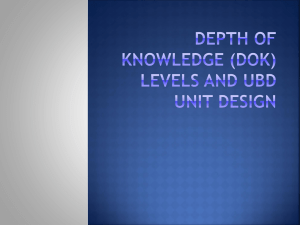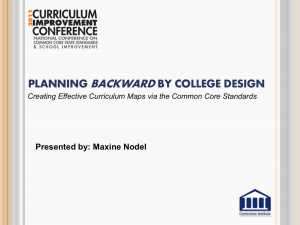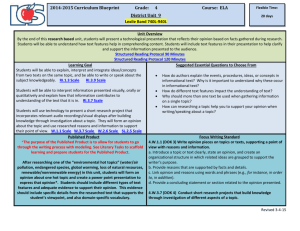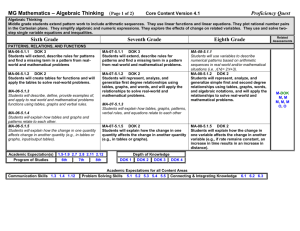Teaching informative writing from sources
advertisement
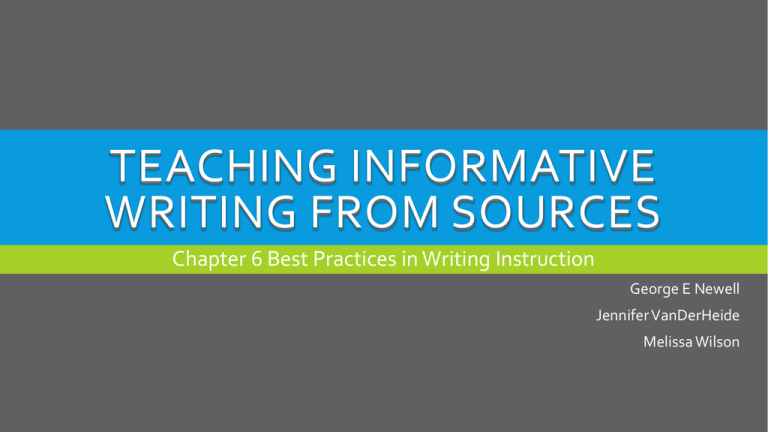
TEACHING INFORMATIVE WRITING FROM SOURCES Chapter 6 Best Practices in Writing Instruction George E Newell Jennifer VanDerHeide Melissa Wilson THE NEED FOR TEACHING INFORMATIVE WRITING FROM SOURCES In the effort to reform writing two major themes have emerged 1) The significance of teachers conceptions of writing 2) The role of writing in learning and critical thinking THE NEED FOR TEACHING INFORMATIVE WRITING FROM SOURCES Across the subject areas, teachers now voice an understanding of the ways in which writing can contribute to learning and see writing as a valuable tool for assessing students’ understandings. At the same time, the actual writing that goes on in typical classrooms across the United States continues to be dominated by tasks in which the teacher does all the composing and students are left to fill in missing information, writing summaries, or writing particular information the teacher is seeking. THE NEED FOR TEACHING INFORMATIVE WRITING FROM SOURCES “We believe that asking students to create their own texts from other texts is a hallmark of what some educators have called “high literacy” (Langer, 2002). This includes not just basic literacy, but “a of the ways in which reading, writing, and content work together” and in the case of writing from sources, the ability to , , and integrate others’ ideas with one’s own writing. This is the kind of literacy we believe should dominate schooling in all subjects. DOK LEVEL ONE Recall & Reproduction Recall of a fact, term, principle, concept, or perform a routine procedure DOK LEVEL 2 Basic Application of Skills/Concepts Use of information and conceptual knowledge Organize/display data, interpret/use simple graphs Use information to follow multi-step procedures DOK LEVEL 3 Strategic Thinking Requires reasoning, developing a plan, decision-making, and justification Abstract, complex, or non-routine; often more than one possible answer DOK LEVEL 4 Extended Thinking An original investigation or application to real world; requires time to research and problem solve. DOK IS ABOUT COMPLEXITY—NOT DIFFICULTY! The intended student learning outcome determines the DOK level. What mental processing must occur? While verbs may appear to point to a DOK level, it is what comes after the verb that is the best indicator of the rigor/DOK level. AFTER THE VERB! Describe the information contained in graphics or data tables in the text; or the rule for rounding a number Describe how the two characters are alike and different. Describe the data or text evidence that supports your solution, reasoning, or conclusions Describe varying perspectives on global climate change using supporting scientific evidence, and identify the most significant effects it might have on the planet in 100 years. THE ROLE OF INFORMATIVE WRITING IN THE UTAH CORE STANDARDS 35% Informational / Explanatory Writing in Elementary The Standards place a premium on students writing to sources, i.e., using from texts to present careful analyses, well-defended claims, and clear information. Rather than asking students questions they can answer solely from their prior knowledge or experience, the Standards expect students to answer questions that depend on their having read the text or texts with care. www.achievethecore.org TYPES OF WRITING (Opinion) (Narrative) FUNCTIONS OF INFORMATIVE WRITING Record The writer records what is immediately present. (DOK 1) Report The writer retells one incident that occurred in the past. (DOK 1) Summary When writing a summary, the writer is retelling multiple events. The writer generalizes from a number of events, procedures, or situations. (DOK 2) Analysis Informational writing that moves from beyond concrete or specific experiences to classifying and categorizing. Logical and hieratical connections are made as well as relationships. (DOK 2-4) WRITING FROM SOURCES Sources Informational Text Literature Illustrations Photos Articles Poems Videos Interviews Graphs Diagrams Paintings Audio Recordings WRITING FROM SOURCES Ownership- Students must feel that there is something of value to the assignment beyond simply completing a series of tasks. Structured Activities- With clear and specific goals students are asked to consider an audience of peers as they develop plans for their writing. The teacher must develop activities that move students along a trajectory from an open-ended exploration to a sense of direction of what needs to be examined and written. Collaboration- The use of considerable peer interaction and sharing are important throughout the process. Appropriate Tasks and Materials-Tasks and materials appropriate for the students’ levels of skill and knowledge. Strategies need to be taught explicitly and directly so students can employ them on their own. Transfer of Control- Although the teacher retains the role of planner and orchestrator, the activities provides students with tools to develop their own ideas.




